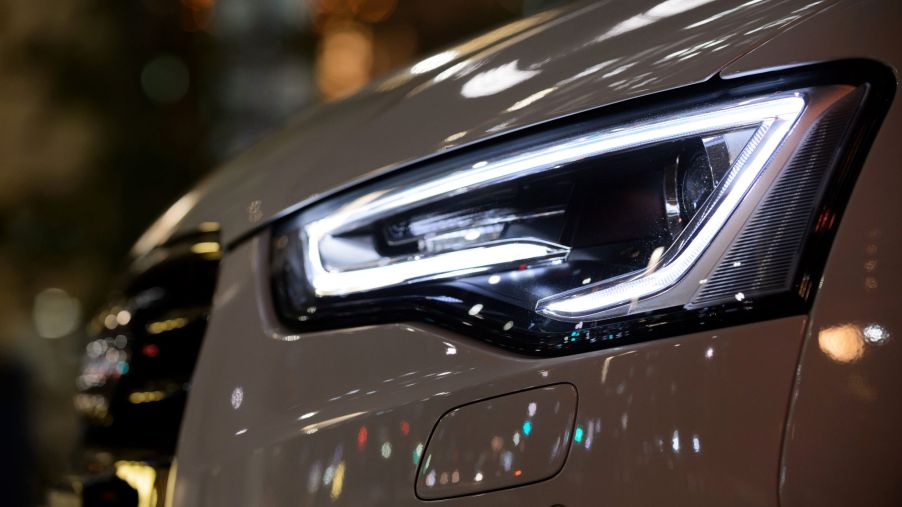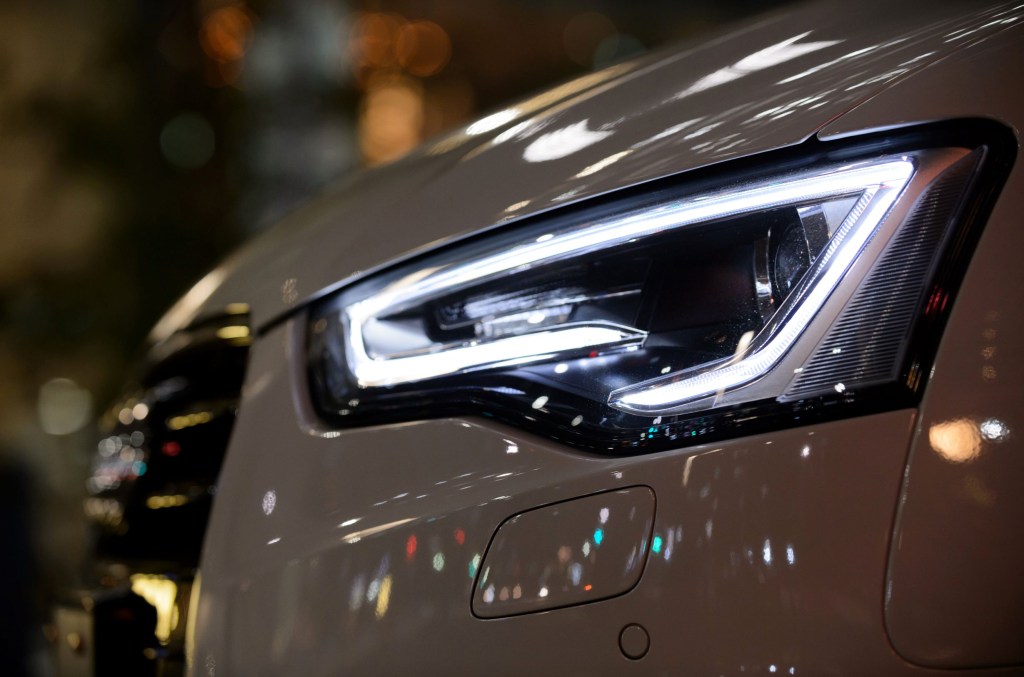
Can HID and LED Headlights Damage Your Eyes?
Car headlights shine so brightly today in part because, as with many automotive accessories, new technologies are available. Instead of halogen bulbs, headlights now often feature HID bulbs or LEDs. However, while dim lights can be a safety hazard, so can blindingly-bright ones. But more than simply dazzling drivers, can HID and LED headlights cause permanent damage?
What is it about HID and LED headlights that make them potentially risky?

There are several reasons why HID and LED headlights seem so bright compared to the older halogen ones.
Firstly, it’s because they generally do put out a greater amount of light, AutoList reports. Secondly, improvements in reflector and lens technology mean headlights throw more light forward, Roadshow reports. And if too much light hits your eyes at once, you get glare, Versant Health explains.
Thirdly, compared to halogens, LEDs and HIDs put out bluer, higher-color-temperature light, Popular Science reports. And generally speaking, the bluer the light, the brighter the human eye thinks it is. But that blue color could come with some drawbacks.
Blue and violet light, because of its shorter wavelength, has more energy than red or green light. And ultraviolet light, the kind that’s emitted by our Sun, has more energy still. That’s why, if you look too long at the Sun without special glasses, it can cause severe eye damage, ForEyes and the American Academy of Ophthalmology explain. And some HID lights, including headlight bulbs, produce UV radiation, OEO, CarLightingDistrict, and Stouch Lighting report.
But LED headlights theoretically carry their own risks. Your eyes have a built-in UV defense: the cornea, Olympus and the American Macular Degeneration Foundation explain. But blue light, as part of the visible light spectrum, passes through. And a high-intensity light with a sub-455-nm wavelength can damage your retina, CNN reports. That wavelength, incidentally, is part of the spectrum emitted by some white-light LEDs, Olympus and Shimadzu report.
Do HID and LED headlights actually pose a danger to your eyes?
So, does all this mean HID and LED headlights are genuinely dangerous? In a word, no.
For one, some halogen bulbs also put out UV radiation, Australia’s Cancer Council reports. But because of how quickly UV intensity drops over distance, the risk is virtually nil. Plus, halogen headlights are behind plastic or glass covers that provide further shielding.
Speaking of shielding, that’s something else LED and HID car headlight bulbs have. Besides the covers, reflectors, and lenses, HID bulbs have built-in UV filters specifically to block their emissions. And LED headlights don’t produce UV lights at all.
In regards to the blue light issue, it’s unclear if every single blue-wavelength light causes damage, the AMF reports. But it’s worth pointing out that the cornea isn’t the only light-absorbing safety mechanism in our eyes, Quartz reports. Plus, it would still take a high-intensity pure-blue light, one above 0.003 W shining directly at your eyeball for a significant period of time. However, automotive LED headlights, in normal conditions, don’t put out that much power.
In Car and Driver’s testing, the 2018 Mercedes-Benz E400’s LED headlights put out 9 lux at 50 feet. With the average eyeball’s radius being 0.945” (according to the Hindawi Journal of Ophthalmology) that works out to 0.000724 W. And even at the E400’s max light output of 21 lux at 80 feet, that’s only 0.00169 W.
Basically, the only way LED or HID headlights can damage your eyes is if you stare unblinkingly at their bare bulbs at point-blank range for minutes and hours.
Newer designs could pose even less danger
While LED and HID headlights were once the cutting-edge technologies, they’re no longer the only non-halogen option. Outside of the US, automakers are experimenting with LED matrix and even laser headlights, Car and Driver reports. The latter kind is especially attractive because they last even longer than LEDs but are more controllable, PowerBulbs explains. Theoretically, that means bright, consistent light without the dazzle.
In fact, some automakers are starting to put this into practice with adaptive driving beams. ADBs are a kind of adaptive headlight, MotorTrend explains. Only instead of distinct high- and low-beam bulbs, they use millions of LEDs and mirrors to selectively ‘dim’ certain areas of the beam, Car and Driver explains. And in some cases, the ADBs come with lasers, too.
Unfortunately, ADBs, like laser headlights, aren’t available in the US due to outdated regulations. But that could be changing in the near future. In the meantime, although improperly-set-up LED and HID headlights can dazzle, they won’t damage your eyes.
Follow more updates from MotorBiscuit on our Facebook page.


